August 9, 2019
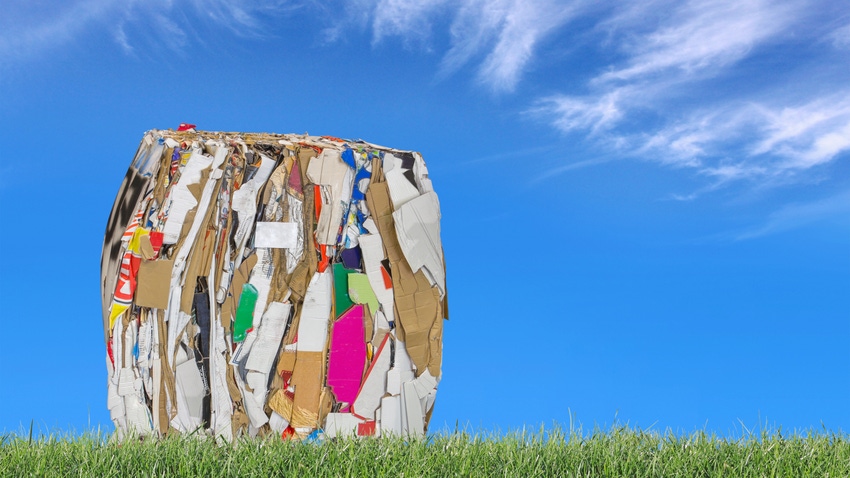
These past few months have been a flurry of packaging and sustainability conferences. From Minneapolis to Paris, it has been rewarding to participate in the global discussion on making packaging systems more sustainable.
Here are key takeaways and perspectives gained from this season’s whirlwind tour at SPC Engage: Minneapolis, GreenBiz’s Circularity ’19, Plastic Free World Conference and Expo, and the International Product Stewardship Forum.
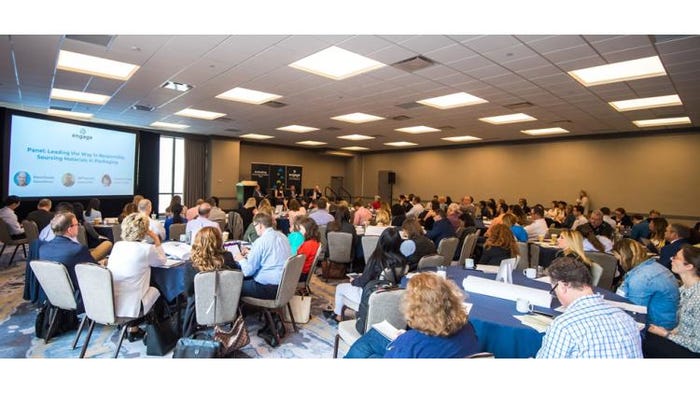
SPC Engage: Minneapolis
Growing global concerns over litter in general and marine plastic pollution specifically, mean that recovery has taken center stage in the packaging sustainability conversation. The focus on recovery and plastics has not always been the focal point in conversations on packaging sustainability, as we saw only a few years ago with many campaigns focused on ending deforestation that lead to commitments like the Consumer Goods Forum 2020 commitment.
These other issues remain very important. However, recovery and end-of-life, especially for plastics, are undoubtedly the packaging sustainability topics dominating headlines today and are top-of-mind for consumers. As a result of the global outcry on pollution, packaging recovery has risen to the top of many companies’ sustainability agendas.
However, the conversation on recovery is increasingly about more than just recycling and recyclability. The community of non-governmental organizations (NGOs), as well as industry and government commitments like the New Plastics Economy Global Commitment and UK Plastics Pact, call for us not only to make all packaging recyclable but also to explore alternative materials with a better recovery story, and alternative business models that move us away from single-use all together.
NGOs like A Plastic Planet assert the narrative that recyclability alone cannot create a circular plastics packaging economy—particularly given that only 9% of all plastics ever produced globally have been successfully recycled. Other solutions must also play a role.
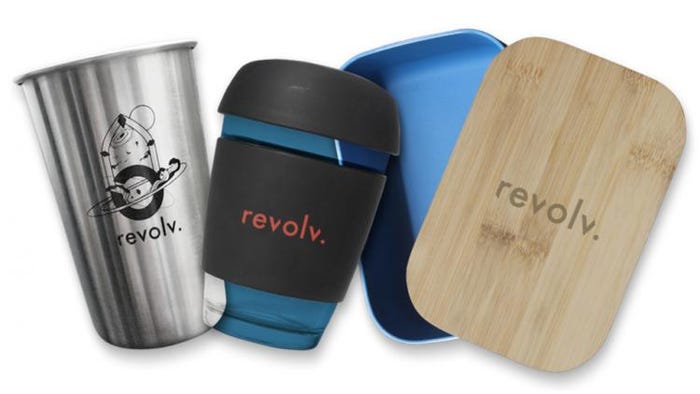
Reuse is among the key solutions being discussed more seriously
At Circularity ’19, keynote speaker Tom Szaky from Terracycle featured beautiful videos and images of reusable, durable packaging being used through the recently launched packaging reuse platform, Loop. The event also featured pitches from promising startup companies working to promote models like reusable ecommerce packaging and reusable to-go cup solutions for Asia. This was followed by a talk about the Ellen MacArthur Foundation’s new report on reuse models for packaging.
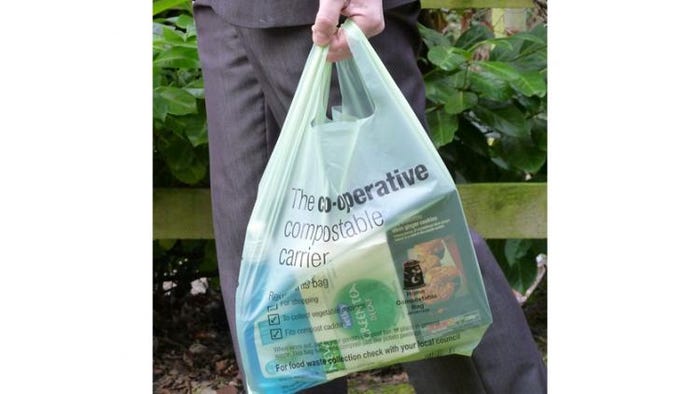
Compostable, biobased solutions are quickly gaining momentum but the conversation can be confusing
In Frankfurt at the Plastic Free World Conference, bio-based alternatives for conventional plastic packaging got a lot of attention, both fiber-based packaging and bioplastic materials. Depending on many design factors, bio-based packaging can be recyclable, compostable, both or neither. This topic is inherently confusing since “bio-based” is a sourcing concept, not a recovery concept and these are often conflated.
In the case of fiber, paper-based packaging tends to have a higher recycling rate than plastics, on average—and can also be compostable, in some cases, depending on design decisions made. However, it is important to avoid making substitutions just for the sake of recovery without also considering other lifecycle impacts. NGOs like Canopy make this argument clearly—asserting the need to avoid sourcing fiber from endangered, old-growth forests, as more companies explore paper packaging options. In other words, do not trade one negative environmental impact for another.
Compostable plastics also took a lead role at A Plastic Free World Conference and were also discussed at Circularity and SPC Engage: Minneapolis. This area of recovery is undeniably growing in interest, with the WEF recently citing compostable bioplastics as one of the top emerging technologies of 2019. Conversations are ongoing about when this option makes the most sense for packaging and the need to develop recovery systems to support it, the need to avoid communicating these materials as “litter friendly,” which is one of the problems with using the term “biodegradable” without context, while at the same time acknowledging that if plastic does end up as litter, conventional plastics are overengineered in the sense that they will stay in the environment for around 500 years.

Packaging optimization has a conflicting but evolving role in the conversation
Another aspect of “turning off the tap” is the idea of simply using less material. Material efficiency has long been a sustainability trend in packaging, with much packaging moving towards a lightweight, often flexible format.
As pointed out in Paris at the International Product Stewardship Forum, Extended Producer Responsibility (EPR) fees in Europe were traditionally determined according to the weight of material put onto the market, which pushed companies increasingly towards flexible formats. However, flexible packaging is sometimes not recyclable, and usually not curbside recyclable with today’s recovery technologies.
The EU’s waste directive amendments will require modular EPR fees for packaging that reflect a wider range of sustainability criteria, looking more closely at features like recyclability, reusability and use of recycled content.
So material efficiency has been and will continue to be a part of the discussion on packaging sustainability, but the recovery element remains critical to address. This is where projects like CEFLEX and Materials Recovery for the Future come into play in efforts to increase the recovery of flexible packaging.
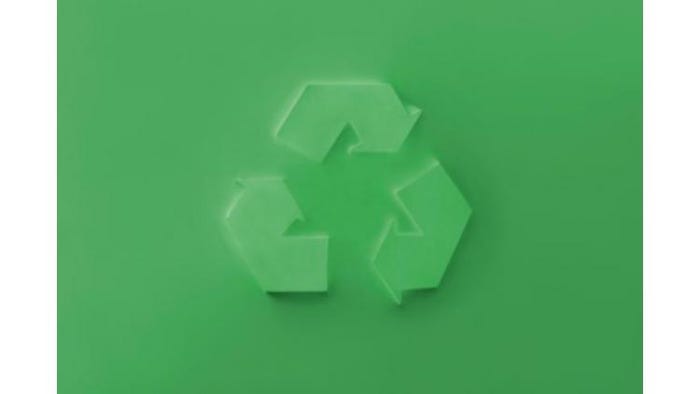
Recycling needs to continue to play a key role in the solution to plastic waste and needs to be disrupted
While recycling alone may not offer a full solution, it remains the most developed and scaled system we have in place around the world today.
In some places, basic recycling infrastructure, including access to collection, would make a big difference, which is where we see a flood of projects like the Alliance to End Plastic Waste and Circulate Capital come into play. But the recycling system of the future is also one that needs to evolve. New infrastructure projects like Project Holy Grail are gaining momentum for improving sortation using chemical markers. Chemical recycling—defined by Chemical Recycling Europe as any reprocessing technology that directly affects either the formulation of the polymeric material or the polymer itself and converts them into useful products like monomers, basic-chemicals alternative fuels and other value-added material—also continues to gain momentum.
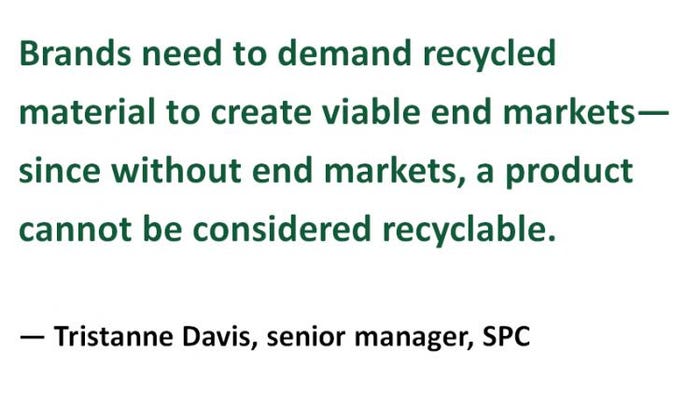
Recovery needs to be safe and then circular
Material health is gaining a lot of momentum in the conversations on recovery. At Circularity ’19 we heard Bill McDonough from the Cradle to Cradle Products Innovation Institute introduce the idea of retox—where we cycle products over and over through recycling, but some of these materials we are recycling are toxic. So we are also cycling toxic chemicals.
At the same time, conversations are evolving on the presence of persistent, carcinogenic chemicals like per- and polyfluoroalkyl (PFAS) found in some paper coatings, as well as other toxic chemicals found in plastics additives. As the industry becomes smarter on the circular economy, we have to think about what, exactly, we are recycling and evaluate if these are chemicals we want to keep in play.
In the midst of this quickly evolving and increasingly multifaceted conversation on packaging sustainability, many companies are still struggling with the basics.
For example, what is recyclable? Recyclability is a function not only of technical feasibility but the whole recycling system, from consumer engagement, collection, sortation, reprocessing, to end markets. Many companies are just beginning this journey to understand what recyclability means and how this applies to their packaging.
As we discussed at SPC Engage: Minneapolis, there is still a considerable disconnect between end markets and the role of the brands. Brands need to demand recycled material to create viable end markets—since without end markets, a product cannot be considered recyclable.
This is especially important today given the collapse of Chinese end markets for many recycled materials. There is an urgent need to create demand for these materials at home, which requires understanding and buy-in from the brands to use more recycled content, as well as a larger industry conversation to broaden the definition of end markets so they can be more inclusive of chemical building blocks in the future. The industry is struggling to understand recyclability at the same time that society is exploring more diverse recovery options, as well as calling upon industry to rethink business models even more fundamentally.
The good news is that the quest for sustainable packaging is an opportunity for innovation. More so now than ever, sustainability is linked to innovation. From exploring opportunities for reuse systems that help capture new customer markets, to materials that support not only recovery but also enable new smart packaging technologies, to exciting new recycling technologies, the opportunities are ripe.
The conversation on packaging sustainability today, as I have observed it, is that there is no single silver bullet. The solutions are emerging on multiple fronts and evolving simultaneously. It is encouraging to see so much activity on packaging sustainability and I am excited to see how the conversation continues to evolve.
____________________________________________________________________________________________
MinnPack 2019 (Oct. 23-24; Minneapolis) is where serious packaging professionals find technologies, education and connections needed to thrive in today’s advanced manufacturing community. See solutions in labeling, food packaging, package design and beyond. Attend free expert-led sessions at multiple theaters around the expo.
About the Author(s)
You May Also Like


